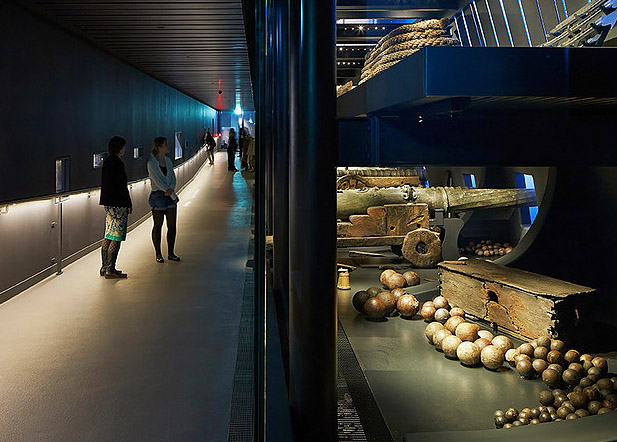About Optics
We concentrate on designing fibre optic lighting systems that offer tremendous flexibility as well as offering the safest method of lighting valuable artefacts.
Our work can be seen internationally in locations as diverse as The Tower of London, The Asian Civilisation Museum, Singapore and Kilmainham Gaol, Dublin

Fibre Optic Systems
Typical Fibre Optic Fibre optic systems consist of three main System components:
- Fibre optic projector. This consists of a lamp and reflector designed to project light on to the end of the fibre optic harness.
- Fibre optic harness. Thousands of strands of glass transmit visible white light through the harness whilst virtually eliminating harmful ultraviolet and infrared wavelengths.
- Fibre optic spotlights. Various designs are available all of which allow designers to precisely control the size, quantity, shape and colour of light emitted from the fibre optic harness.
The Security Advantages
By using a remote light source located in an accessible position the need to enter a showcase is eliminated. At the Tower of London the projectors are located in the top of the showcases. Should a lamp require replacing it can be done without opening the case and exposing the crowns to dust, moisture and most importantly risk of theft.
Protect from UV & Infrared Damage
Paper, textiles and pigments etc. are all damaged when exposed to light. With fibre optic systems the harmful heat and ultra-violet content found in most other lighting systems is virtually eliminated (well below the recommended 10 micro watts per lumen). Exhibits can be displayed for longer without fear of damage. One lamp, many spotlights. The tower showcase shown here contains 32 spotlights operating from one 12 volt 50 watt lamp. The result is an even distribution of light from the top to the bottom of the case.
Precise Optical Control
Because fibre optics use a lens to collect and control the light emitted from the glass harness it is possible to control the light distribution and intensity with a precision no other lighting system can match. The crown is bathed in a pool of light whilst the cushion is left in darkness. The visual impact of the exhibit is further enhanced.
Miniature Spotlights
The nature of fibre optics allows spotlights to be reduced to a minimum. Multiple spotlights ensure greater control and many more display options. Because there is no heat at the output end of the harness it is possible to add coloured or neutral density filters to the spotlights to change the colour or light level as required.
some of our clients include

